What Makes Rhodium so Valuable? Is it Different Than Platinum or Palladium as a Catalyst?
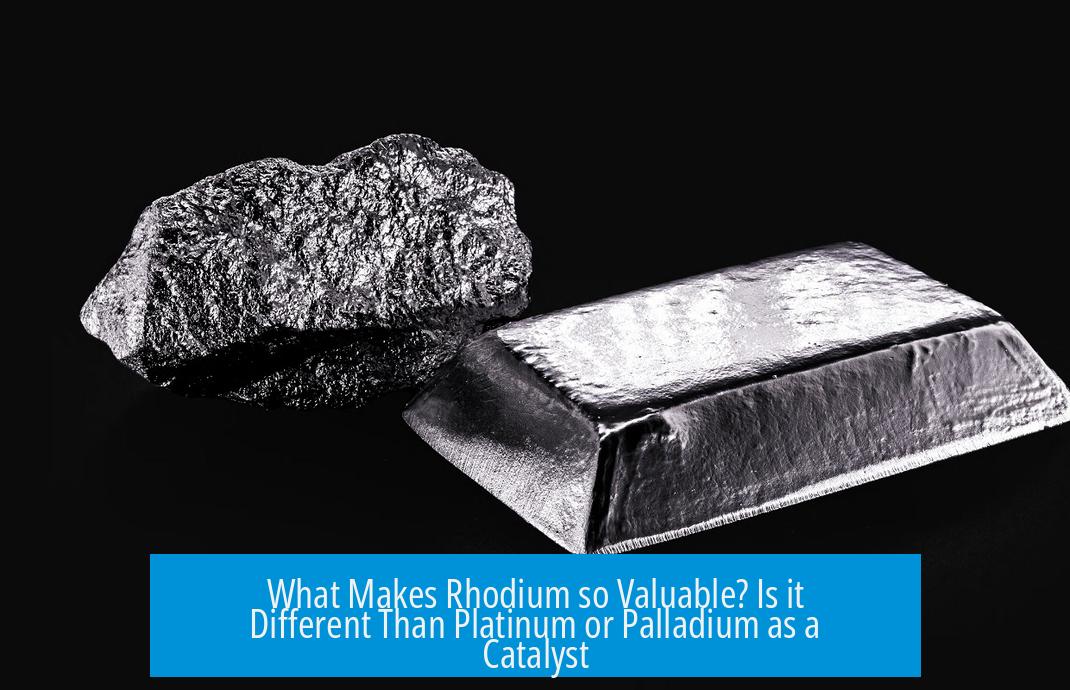
Rhodium’s value arises primarily from its extreme scarcity, unique catalytic properties—especially for reducing nitrogen oxides (NOx) emissions—and limited geographic supply, combined with increasing industrial, environmental, and fashion demands. Its catalytic role distinguishes it significantly from platinum and palladium, with no full substitutes currently available for key emissions reduction tasks.
1. Scarcity and Supply Challenges
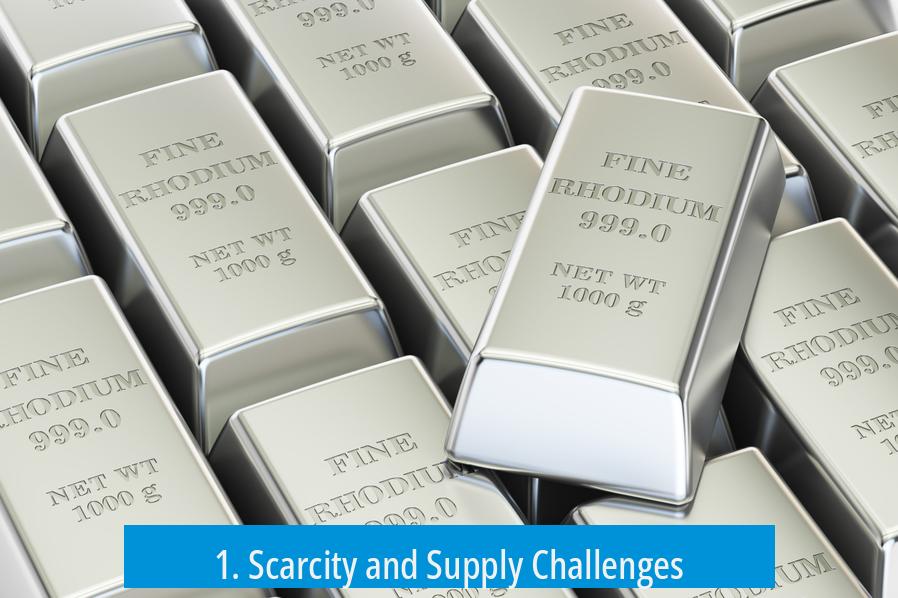
Geographic Concentration and Rarity
Rhodium is exceptionally rare. Around 85% of the global supply originates from South Africa, with most of the remainder coming from Russia. This concentration makes its availability vulnerable to regional disruptions.
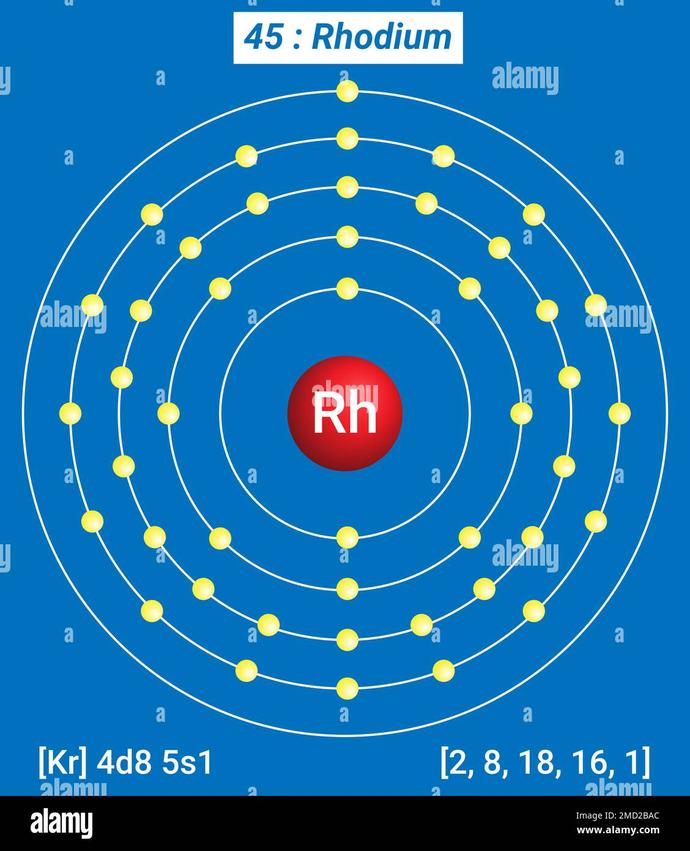
The metal is usually extracted as part of platinum group metals (PGMs) from ores, requiring complex refining processes. This complexity adds to its scarcity and cost.
Production Disruptions and Supply Chain Constraints
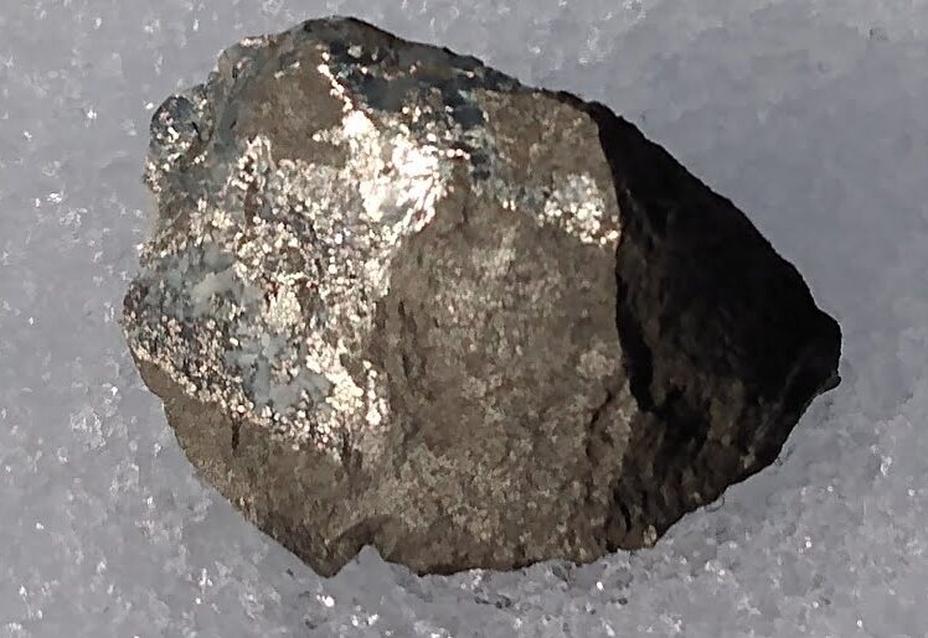
The leading rhodium miner underestimated demand levels and temporarily shut mining operations for major upgrades. Complicating this, Covid-19 travel restrictions delayed necessary workforce mobilization, causing refinery damage and extending downtime. These issues severely constrained rhodium availability.
2. Unique Catalytic Properties of Rhodium
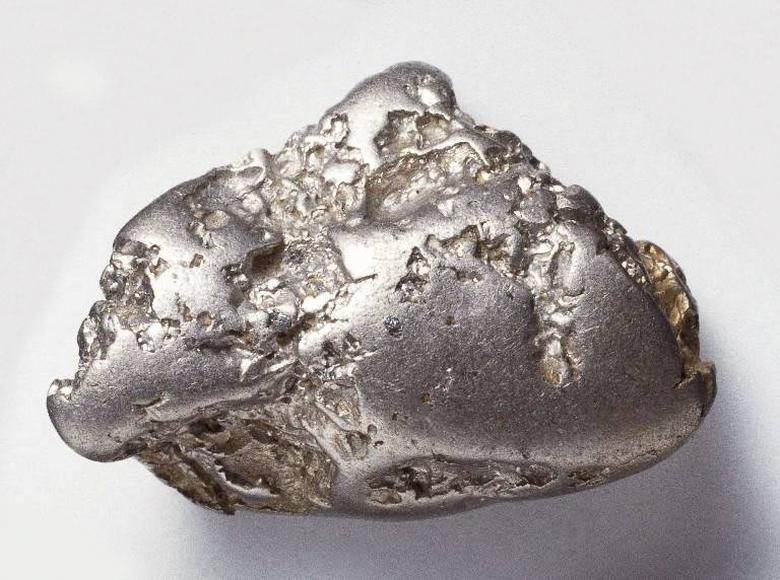
Role in Automotive Catalysts
Rhodium plays an indispensable role in the three-way catalytic converters used in gasoline engines. Together with platinum, it enables efficient reduction of NOx emissions, a major pollutant regulated worldwide.
Platinum and palladium do catalyze other reactions such as oxidation, but neither replicates rhodium’s efficacy in NOx reduction under typical operating conditions while maintaining long-term stability.
Self-Regeneration and Catalyst Stability
Besides NOx reduction, rhodium helps the catalyst regenerate itself. This property extends the life and effectiveness of three-way catalysts, supporting compliance with increasingly strict emission standards.
Limited Substitution
Catalyst manufacturers can tweak the ratios and shapes of platinum group metals in converters but cannot entirely eliminate rhodium. Some rhodium is always necessary to meet emissions targets mandated by regulators.
Impact of Stricter Emissions Regulations
Countries like China and those in Europe enforce tighter emissions rules. Automakers must supply vehicles fitted with catalysts that meet these new standards. Developing and testing novel catalyst formulations can take years, so manufacturers continue sourcing rhodium-intensive converters to comply today.
3. Other Factors Driving Rhodium’s Value
Comparison with Other Rare Metals
Rhodium’s market value far surpasses rarer elements like osmium, despite osmium’s unique oxidation properties. The demand-supply dynamics of rhodium, linked directly to automotive and industrial needs, differ significantly from those of osmium.
Emerging Applications Beyond Catalysis
- New catalytic applications continue to emerge for rhodium, expanding its industrial role.
- Rhodium plating excels in reflectance, particularly in the infrared spectrum, finding use in military and optical equipment.
- Despite its high cost, rhodium is increasingly popular in jewelry, where it serves as a plating metal for durability and shine.
Market Speculation
Demand for rhodium also benefits from speculative investment trends influencing precious metals such as silver, gold, platinum, and other PGMs. This speculation can exacerbate price volatility and push prices higher.
4. Detailed Differences from Platinum and Palladium as Catalysts
| Aspect | Rhodium | Platinum | Palladium |
|---|---|---|---|
| Primary catalytic function | NOx reduction in three-way catalytic converters | Oxidation of CO and hydrocarbons, supports NOx reduction in combination | Oxidation of CO and hydrocarbons |
| Stability under emissions conditions | Maintains activity and self-regenerates at high temperatures | Stable but less effective for NOx reduction alone | Less stable for NOx reduction, primarily an oxidation catalyst |
| Demand Drivers | Strict emissions standards and scarcity | Long-term automotive and industrial use | Increasing use in gasoline engines with lean burn systems |
| Supply Sources | Highly concentrated supply (South Africa, Russia) | More broadly sourced, but limited | Relatively more abundant |
| Price Volatility | Extremely volatile due to demand-supply imbalance | Historically high but more stable | Moderate volatility |
Summary of Rhodium’s Value Drivers
- Scarcity: Rhodium’s supply is limited by geography and complex extraction, concentrating risk in a few regions.
- Emissions Catalysis: Rhodium uniquely catalyzes NOx reduction, critical for modern vehicle pollution control.
- Supply Chain Issues: Operational disruptions have tightened supply recently, pushing prices upward.
- Additional Uses: Military infrared applications and high-end jewelry increase demand beyond traditional catalytic uses.
- Market Factors: Speculation amplifies price movements along with industrial demand.
Conclusion
Rhodium remains one of the most valuable metals due to its exceptional catalytic abilities and extreme rarity. Its essential role in reducing vehicle NOx emissions, combined with supply limitations and rising regulatory demands, differentiates it sharply from platinum and palladium. Though some substitution is possible, no current alternatives match rhodium’s performance in current environmental standards.
This unique combination of factors means rhodium prices can fluctuate dramatically. It serves as a critical material in modern technologies. Also, its expanding role in fashion and military sectors broadens its valuation basis.
Key Takeaways
- Rhodium is highly scarce, concentrated geographically, mainly in South Africa and Russia.
- Its unique catalytic function reduces harmful NOx emissions, unlike platinum and palladium.
- Supply chain disruptions and complex refining heighten rhodium’s market value.
- Increasing regulatory pressure sustains demand for rhodium-rich catalytic converters.
- Additional applications and market speculation elevate and destabilize rhodium prices.
What Makes Rhodium so Valuable? Is It Different than Platinum or Palladium as a Catalyst?
Rhodium stands out because of its unique catalytic abilities, extreme scarcity, and a tangled supply chain that makes it one of the priciest metals on Earth. But wait—how is it really different from platinum or palladium, especially in its role as a catalyst? Let’s dive deep into the rhodium story, explore its oddball traits, and see why it commands such respect (and a hefty price tag) compared to its platinum group buddies.
First off, rhodium is ridiculously rare. About 85% of the world’s rhodium comes from South Africa, with much of the rest sourced from Russia. It’s often hiding out mixed with other platinum group metals in ore, so extracting it is a bit like finding a needle in a haystack that also needs refining. When you add a recent supply fiasco—South Africa’s major rhodium miner confidently misjudged market demand, paused operations for a multi-year upgrade, then was blindsided by COVID lockdowns blocking foreign workers—the supply chain blew up spectacularly. The entire mine/refinery suffered neglect, needing a basically complete rebuild.
This means rhodium’s availability tanked just as demand surged. Scarcity + high demand = a recipe for skyrocketing prices.
Rhodium’s Magical Role in Catalysts
Here’s where rhodium really earns its keep: catalytic converters in cars. Automakers use three-way catalysts containing platinum, palladium, and rhodium to cut harmful emissions. While platinum and palladium handle carbon monoxide and hydrocarbons, rhodium specializes in reducing nitrogen oxides (NOx). NOx is a major pollutant vaporizing into smog and acid rain. Rhodium-platinum combos can break down NOx effectively—something platinum or palladium alone can’t do reliably in automobile exhaust conditions.
Moreover, rhodium helps the catalyst to self-regenerate, maintaining long-term efficiency. It’s like the catalyst’s personal mechanic, repairing and keeping the system running smoothly. This NOx reduction task is crucial since China and Europe continue to tighten emission standards. Cars sold today must have converters meeting these strict targets, requiring a certain minimum of rhodium in the mix.
Manufacturers can tinker with metal ratios and shapes a bit, but rhodium remains irreplaceable. Developing and testing a new, lower-rhodium catalyst design isn’t quick—it involves years of R&D and durability checks. Since factories can’t wait, they still rely heavily on yesterday’s high-rhodium tech, keeping demand pressure on this scarce metal.
So, Is Rhodium Really Different from Platinum or Palladium as a Catalyst?
Yes, absolutely. While platinum and palladium are heavy hitters in the catalyst world, they don’t cut it for NOx reduction. Rhodium fills this unique gap. You can think of it like the specialist on a sports team that no one else can replace—even if the other players are stars, the rhodium player is the seal-the-deal scorer. This special catalytic skill is the single most important factor behind rhodium’s astronomical value.
And this difference isn’t merely theoretical. The stricter emission norms worldwide mean rhodium’s presence in automotive catalysts is non-negotiable. No easy substitutions here.
Other Fascinating Factors Driving Rhodium’s Value
Now, let’s clear up a common myth: rhodium isn’t valuable just because it’s pretty. Osmium is rarer and known for unique oxidation chemistry but trades for roughly one-sixth the price of rhodium. Why? Because rhodium’s utility far outpaces osmium’s in industries that matter—primarily automotive emission control and military tech.
Speaking of military, rhodium shines brighter than a disco ball—quite literally. When plated, it boasts the highest reflectance of any metal, especially in the infrared spectrum. This makes it invaluable for specialized military applications like infrared optics and sensors, pushing up demand beyond catalytic converters.
Fashion buffs getting fancy lately also contribute to its rising price. Rhodium-plated jewelry is chic, durable, and shiny, popular partly because it’s so costly—making it a status symbol in itself.
Lastly, market speculation can’t be ignored. Just like gold and silver, rhodium experiences price swings driven by investor trading, further igniting its allure and value.
Summary: Why Rhodium Holds Its Crown
- UNIQUE CATALYTIC POWER: Rhodium reduces NOx emissions in ways platinum and palladium can’t, especially under tough automotive conditions.
- SCARCE AND GEOGRAPHICALLY LIMITED: Mostly mined in South Africa and Russia, with fragile supply chains causing shortages.
- MULTIPLE APPLICATIONS: From military tech requiring high reflectance to fashionable jewelry, rhodium’s usefulness spans beyond catalysts.
- STRONG DEMAND + SUPPLY ISSUES: Stricter emission standards globally push up automotive demand, while mining hiccups cut supply.
- MARKET SPECULATION: Investors drive volatility and inflate prices.
So, when you see rhodium priced higher than gold or platinum per ounce, remember it’s no arbitrary luxury. It combines science, scarcity, and specialized industrial needs in a perfect storm. It’s the catalyst world’s secret weapon—indispensable and rare—making it the tough metal kingpin standing apart from platinum and palladium.
Ever thought about the little silvery speck inside your car’s catalytic converter? That’s rhodium working overtime to keep our air cleaner, quietly justifying its sky-high price and unique status. Next time you admire a shiny piece of rhodium-plated jewelry or notice a car model boasting eco-friendly tech, you’ll know why rhodium is truly special.
Why is rhodium so scarce and hard to supply?
About 85% of rhodium comes from South Africa, with the rest mainly from Russia. It’s found mixed with other platinum group metals, requiring complex refining. Supply has been disrupted by mine shutdowns and COVID-19 restrictions.
How does rhodium differ from platinum and palladium as a catalyst?
Rhodium uniquely reduces harmful NOx emissions in automotive catalysts. Platinum and palladium cannot perform this function under current emissions conditions. Rhodium also helps regenerate catalytic converters.
Can other metals replace rhodium in catalytic converters?
Manufacturers can adjust metal ratios and particle structures slightly. Still, rhodium remains essential for NOx reduction. No alternative metal matches its performance and stability in this role.
How do strict emission standards affect rhodium demand?
Stricter rules in China and Europe force car makers to use catalysts with rhodium to meet NOx limits. Developing new catalysts takes years, so current production still relies heavily on rhodium-rich designs.
Besides catalysis, where else is rhodium used?
Rhodium’s high reflectance makes it valuable in military infrared applications. It is also increasingly popular in jewelry. Market speculation in precious metals further raises its price.


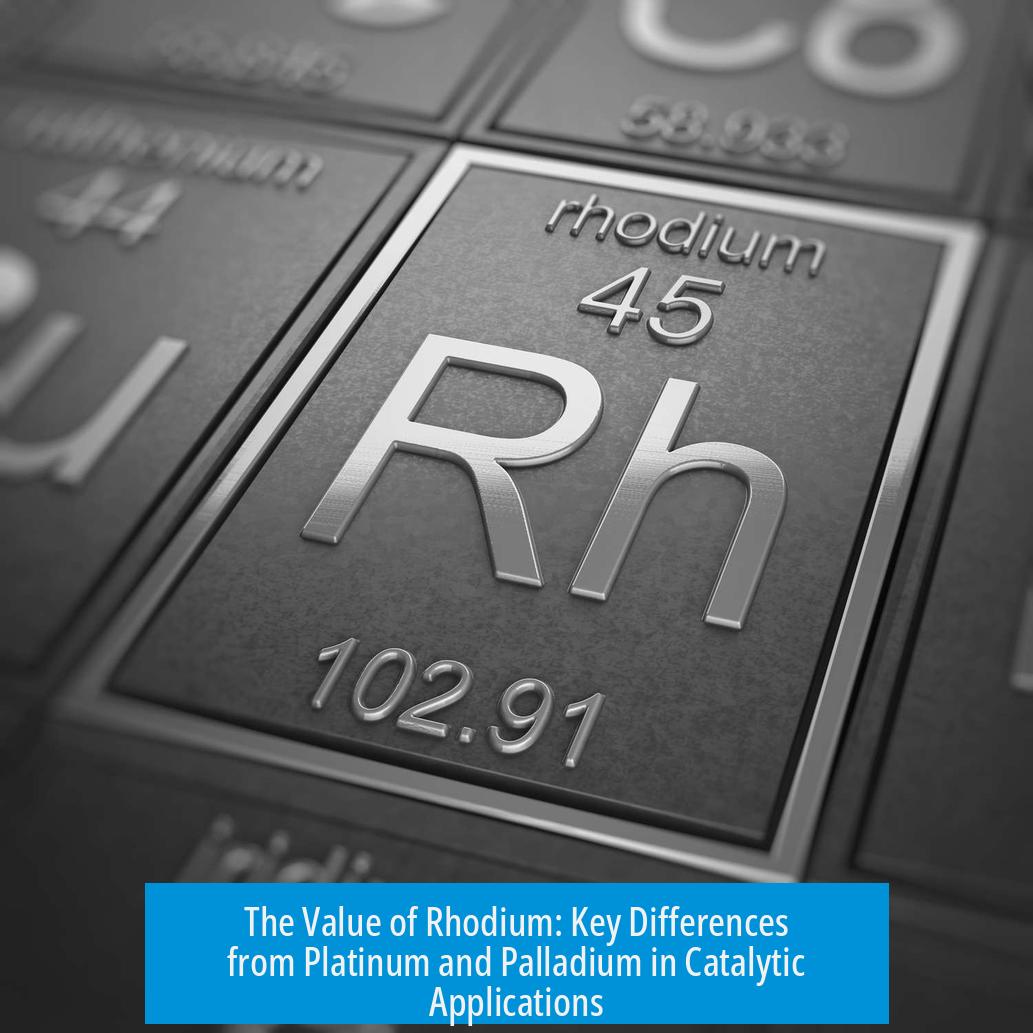

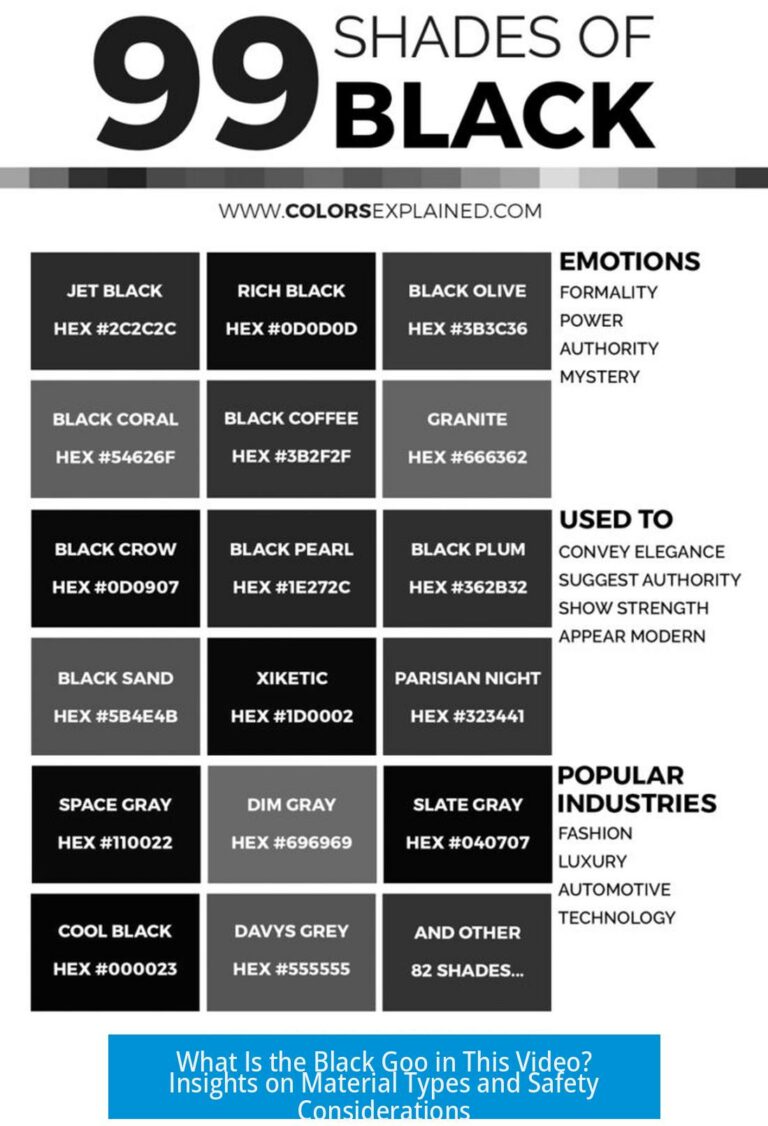
Leave a Comment